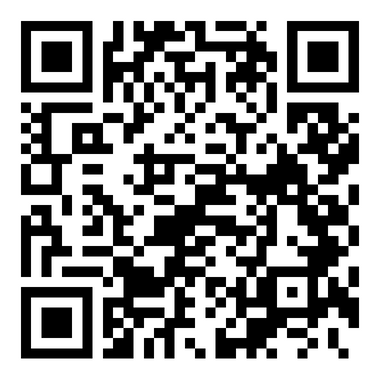Integral gaussiana pela série de Taylor e aplicações
DOI:
https://doi.org/10.35819/remat2021v7i2id4330Palavras-chave:
Integral Gaussiana, Funções Especiais, Derivada FracionáriaResumo
Neste artigo, apresentamos uma solução para uma integral gaussiana específica. Introduzindo um parâmetro que depende de um índice n, encontramos uma solução geral inspirada na série Taylor de uma função simples. Demonstramos que esse parâmetro representa os coeficientes da expansão dessa função, um resultado muito interessante e novo. Também introduzimos alguns teoremas que são provados por indução matemática. Como teste para a solução apresentada aqui, investigamos uma versão não extensiva para a densidade do número de partículas na estrutura de Tsallis, o que nos permitiu avaliar a funcionalidade do método. Soluções para uma determinada classe das funções gama e fatorial também são derivadas. Além disso, apresentamos uma aplicação simples em cálculo fracionário. Concluindo, acreditamos na relevância deste trabalho, pois apresenta uma solução para a integral gaussiana de uma perspectiva inédita.
Downloads
Referências
ARFKEN, G. B.; WEBER, H. J. Mathematical Methods for Physicists. New York: Academic Press, 2005.
BOAS, M. L. Mathematical methods in the physical sciences. New Jersey: John Wiley & Sons, 2006.
CONRAD, K. T. The Gaussian Integral, 2013. Available in: https://www.semanticscholar.org/paper/THE-GAUSSIAN-INTEGRAL-Conrad/4687538f80e333c175691d627dc1254eef3605f8. Access in: 2020.
DAVIS, P. J. Leonhard Euler's Integral: A Historical Profile of the Gamma Function: In Memoriam: Milton Abramowitz. The American Mathematical Monthly, v. 66, p. 847-869, 1959.
GREINER, W. Quantum Mechanics: An Introduction. Berlin: Springer, 1990.
GREINER, W. Thermodynamics and Statistical Mechanics. Berlin: Springer, 1995.
GRONAU, D. Why is the gamma function so as it is? Teaching Mathematics and Cumputer Science, v. 1, p. 43-53, 2003.
HERNANDEZ, S. M. Termodinàmica i Mecànica estadìstica. London: Lulu, 2015.
LAPLACE, P. S. Théorie Analytiques des Probabilités. Paris: Courcier, 1820.
OLIVEIRA, E. C.; MACHADO, J. A. T. A review of definitions for fractional derivatives and integral. Mathematical Problems in Engineering, v. 2014, p. 1-6, 2014.
PATHRIA, R. K. Statistical Mechanics. Oxford: Butterworth-Heinemann, 1996.
PESSAH, M. E.; TORRES, D. F.; VUCETICH, H. Statistical mechanics and the description of the early universe. (I). Foundations for a slightly non-extensive cosmology. Physica A, v. 297, p. 164-200, 2001.
RILEY, K. F.; HOBSON, M. P.; BENCE , S. J. Mathematical Methods for Physics and Engineering. Cambridge: Cambridge University Press, 2006.
SAKURAI, J. J. Modern Quantum Mechanics. New York: Addison-Wesley, 1985.
SALINAS, S. R. A. Introduction to Statistical Physics. New York: Springer, 2001.
SHEN, K. M.; ZHANG, B. W.; WANG, E. K. Generalized ensemble theory with non-extensive statistics. Physica A, v. 487, p. 215-224, 2017.
SPIEGEL, M. R. ; SCHILLER, J. ; SRINIVASAN, R. A. Schaum's Outline of Probability and Statistics. New York: McGraw-Hill, 2001.
STAHL, S. The Evolution of the Normal Distribution. Mathematics Magazine, v. 79, n. 2, p. 96-113, 2006.
STIGLER, S. M. Laplace's 1774 memoir on inverse probability. Statistical Science, v. 1, p. 359-378, 1986.
STURM, J. K. F. Cours d'Analyse de l’école polytechnique. Paris: Mallet-Bachelier, 1857.
TSALLIS, C. Possible generalization of Boltzmann-Gibbs statistics. Journal of Statistical Physics, v. 52, p. 479-487, 1988.
WEISSTEIN, E. W. Gaussian integral. From MathWorld-A Wolfram Web Resource. Available in: http://mathworld.wolfram.com/GaussianIntegral.html. Access in: 2020.
WEISSTEIN, E. W. Hypergeometric Function. From MathWorld-A Wolfram Web Resource. Available in: https://mathworld.wolfram.com/HypergeometricFunction.html. Access in: 2020.
Downloads
Publicado
Edição
Seção
Licença
Copyright (c) 2021 REMAT: Revista Eletrônica da Matemática

Este trabalho está licenciado sob uma licença Creative Commons Attribution 4.0 International License.
Os autores detêm os direitos autorais dos artigos publicados e concedem à REMAT o direito de primeira publicação e distribuição de partes ou do trabalho como um todo com o objetivo de promover a revista. Os autores são autorizados a distribuir a versão publicada do artigo, como por exemplo em repositórios institucionais, desde que façam menção de publicação inicial nesta revista a partir da disponibilização do DOI do artigo.
Os artigos são publicados sob a licença Creative Commons Attribution 4.0 International License (CC BY 4.0). Isso permite que o conteúdo seja utilizado para criação de novos trabalhos, tanto para fins comerciais quanto não comerciais, desde que seja feita a devida atribuição ao autor original, conforme especificado na licença.













 https://orcid.org/0000-0002-0893-7426
https://orcid.org/0000-0002-0893-7426


















